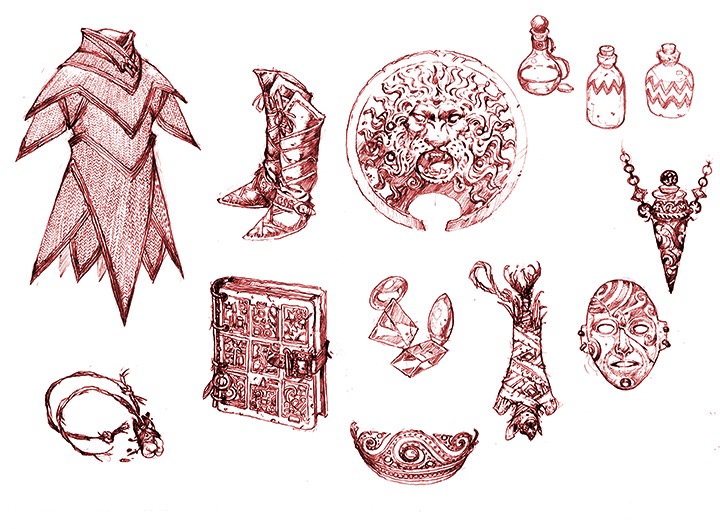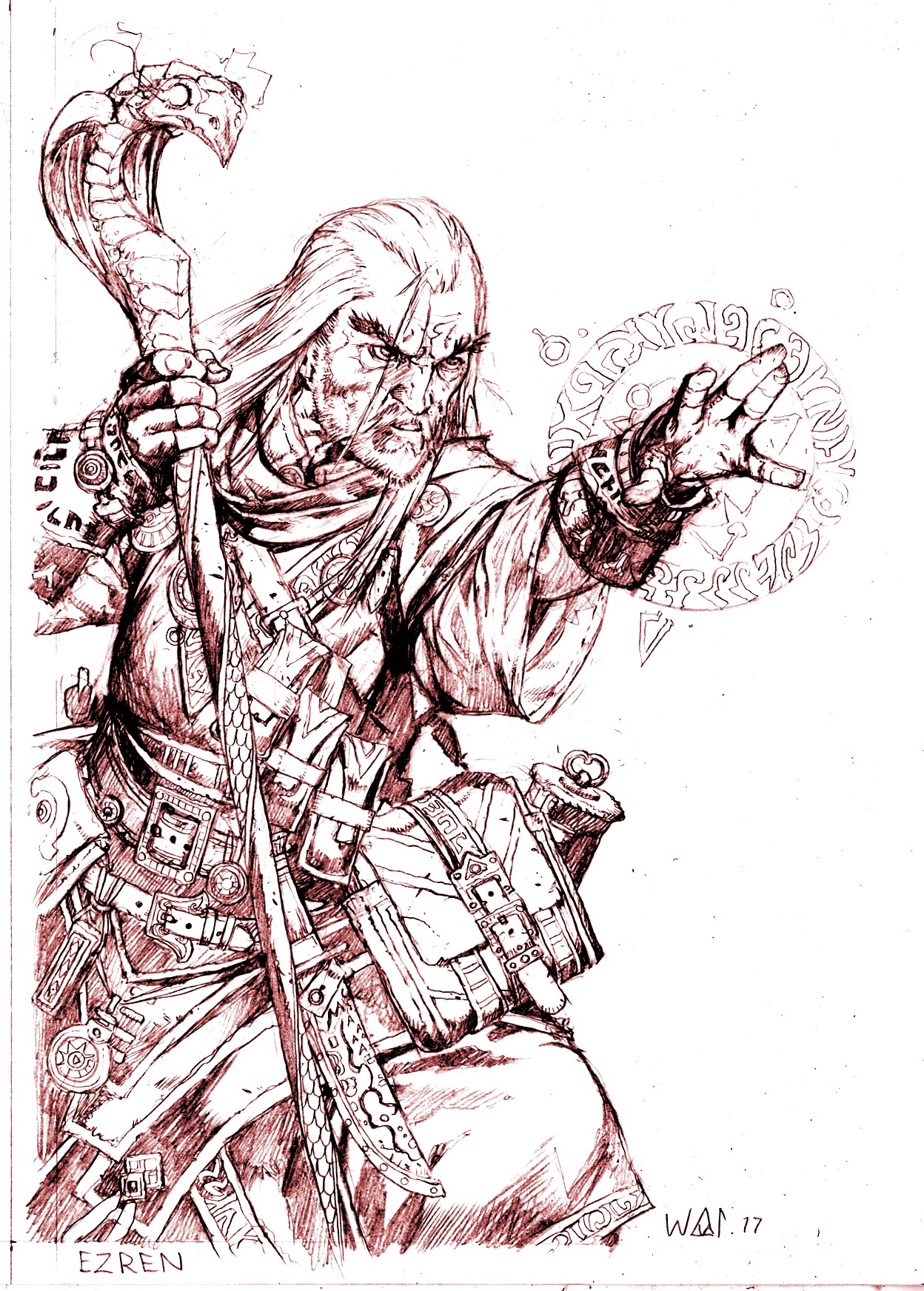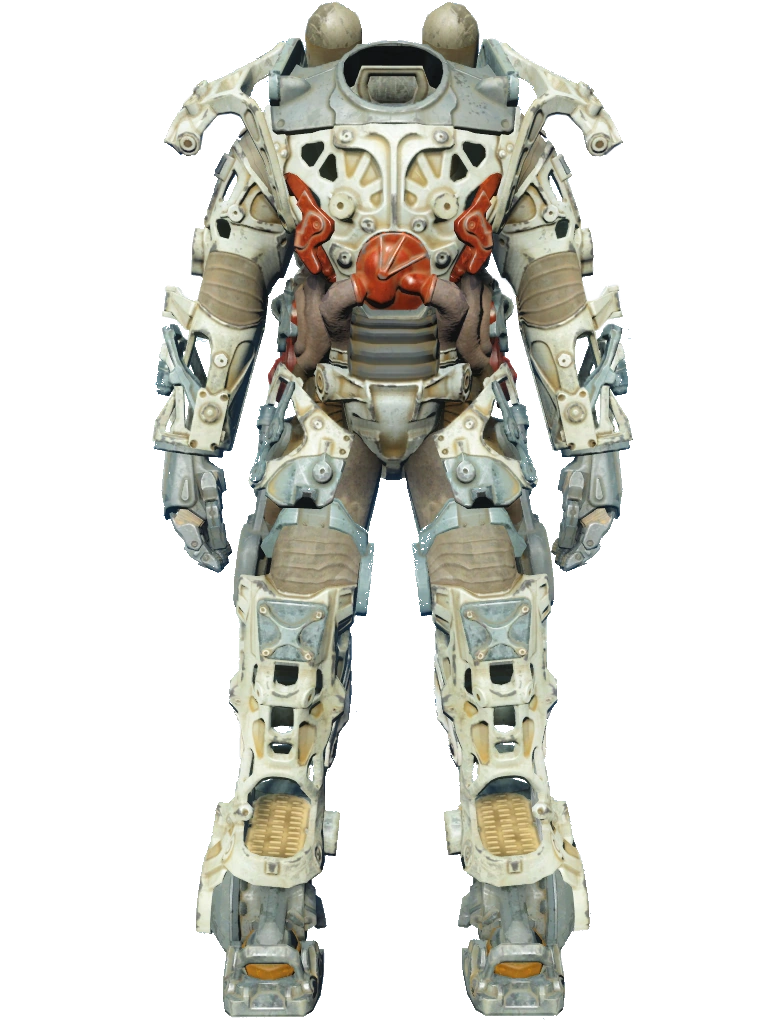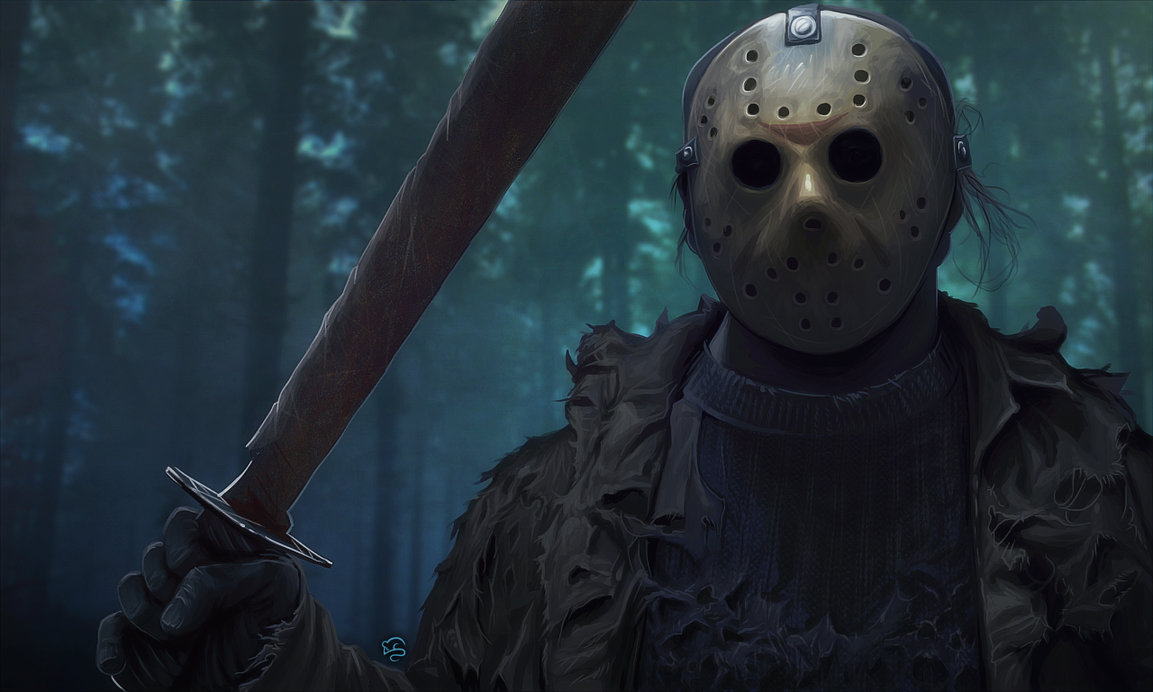
As many people know, Pathfinder has finally gotten around to
creating the first revision to their rules.
Pathfinder 2.0 now has a playtest rule set out now, and I’m going to go
through the rule book and make my own assessments of what’s there. To start, I will not be assessing the
“overview” of the book too much, rather I’ll only focus my attention on the
aspects that deal with character creation from there, though I may backtrack if needed as I get to new chapters/sections.
 Abilities &
Generating Scores
Abilities &
Generating Scores
The classic six have returned. To be honest it would have been nice to see a
bit of a change up to further differentiate itself from D&D, but when
something works you may as well stick with it.
Ability scores start with a base of 10, from there you apply
what they are calling Ability Boosts and Flaws.
A boost will typically add up to 2 points to a score, but if a score is
at 18 then it can only be increased by 1 point.
And at 1st level the highest starting score you can have is
18.
This isn’t too surprising as D&D 5th Edition
even puts a limit on how high your starting Ability Score can be. What confuses me is if you have 2 points that
would go to a single score if it automatically equates to just a +1 to it if
your at 18 or higher. If I were to
guess, I’d say yes. Now Ability Boosts
break down into ones that must go to a specific Ability Score, and “Free”
points that can go anywhere.
At every 5 levels (5, 10, 15, 20) you gain ability boosts in
four different scores, and your free to apply these points to scores that are
at 18 or higher. Just remember that if a
score is at 18, it will likely cost you 2 points to up it by just 1 point.
Now Flaws come in as the opposite of a Boost, decreasing a
score by 2 points. These are not common
placed, and typically result from a character’s ancestry (discussed soon).
Over all it feels like a refinement of the Point Buy system,
and integrates it completely into character creation. Your character’s Ancestry, Background, and
Class are the aspects that add to your starting scores.
But what if your dead set on rolling dice? Well there’s rules for that still. Yep you’re not forgotten in there for those
groups that prefer the total randomness of dice rolls. Here the base generation of scores is partly
ignored and the classic rolling of 4d6 six times and discarding the lowest die
is used. Of course, the score limit of
18 is still applied.
From there you apply bonuses from your Ancestry, Background,
but not one from your chosen class.
 Ancestry, A Nice Way
of Saying Pick Your Race/Species
Ancestry, A Nice Way
of Saying Pick Your Race/Species
The first thing to keep in mind here is to only expect the
basic character species, and nothing too exotic. Here you’ll encounter the Dwarf, Elf, Gnome,
Goblin, Halfling, and Human. Half-breed
species are handled in a unique way.
Here you start with a base human, and then select an appropriate “ancestry”
feat that you will apply to the character.
Its an interesting method of dealing with it and could allow your to
work out a character who is made up of 3 different species…well that is how it
initially reads, since this is just a side bar. We’ll see how this plays out
once I get around to the human.
Now each species does have a level limit, and as you gain
levels you can gain additional Ancestry or Heritage feats. That is to say; some feats have the Heritage
trait and can only be taken at 1st level.
Character species all determine your base HP, grant Ability
Boosts/Flaws, Size, Speed, Languages & bonus languages, Traits, and special
features like Darkvision.
Dwarf: Seem pretty
light, when you look over their Ancestry feats.
It feels like they should get to pick two of these at the start, but you
get just the one. Dwarf’s start with 2
inherent features. And an ability flaw toward Charisma. Dwarves start with a base HP of 10.
Elf: The elf seems
pretty straight forward, one inherent feature and an ability flaw toward
Constitution. Compared to the Dwarf they
should have one additional feature, but don’t.
Elves start with a base HP of 6.
Gnome: It’s a bit
funny to see that the gnome starts with 8 HP, more than the elf. Like the elf, they have only 1 feature, and
their ability flaw is toward Strength.
Goblin: Well here is
the hallmark of Pathfinder. Goblins get
one feature, 6 HP, and Wisdom as their flaw.
Halfling: So for the
halfling your looking at no features here.
Now its possible that they may be looking to add something later, but
the species feels its severely lacking in comparison to the other species on
the outset. Starting HP is 6, flaw is
Strength, and no, they don’t get any extra feats.
Human: And now to see
what the Human species has to offer.
Starting HP is 8, no flaws since you can choose 2 boosts to apply
freely. No features are present, and
humans only get the one ancestry feat.
Now half-breed species are outlined here, and it looks like there’s no
mixing & matching.
Backgrounds
Following the various species or Ancestries, are
backgrounds. These seem to be similar to
the backgrounds found in D&D in terms of names. Each background offers 2
ability boosts, with one on a required ability score, and the other being a
free boost. Your character also acquires
a skill feat of some sort that pertains to the background, as well as being
trained in a similarly appropriate skill.
This feels to be the same as that what we’ve seen in D&D 5th
Edition, but with its own spin on things.
Languages
Well nothing really spectacular or different here, just the
usual list of languages and what speaks them.
Moving on…
 Classes
Classes
Finally, the bread & butter of the game. What we have here is the usual assortment of
classes…but with the exception of the loss of the Warlock class. Each class has a key ability that you need to
be the focus of your ability score building efforts. Hit points that they gain, proficiencies, a
specific skill that their trained in, their saving throws (which are noted as
Expert or Trained), a number of skills that they are trained in as well, and
finally something called Signature Skills (which seem to be specific skills
that can be increased up to certain high levels that others cannot, if I’m
reading into this right).
Additionally each class has specific class feats available
to it, and those feats are listed with the class, making it easy to find them
instead of searching through a list and then looking at the writeups in a
different chapter. Now please keep in
mind that I’m not going to write out every aspect of a class, but I will hit on
a few points.
Alchemist
I’ve never played an alchemist in any game. Now with that in mind, the alchemist is all
about bombs and potions. INT is the main
ability score, and HP is 8 + CON. Perception
is at the trained level of the class.
Barbarian
Well this seems to be your normal rage monster. Barbarians make use of totems and their rage in
combat. The totems here are Animal and
Dragon, Fury, Giant, Spirit, and Superstition totems. Unlike Barbarians in D&D, the ones here
need armor, not just a CON modifier to use for your AC. Key ability is STR of course, HP is 12 + CON,
and their Perception skill is at expert.
Bard
Well here’s the class people largely think is annoying and
useless. The Bard is the start of the
spell casting classes. Cantrips here do
follow the D&D route of cantrips not using spell slots and can be cast with
impunity (so to speak). Bards has muses
that help to influence their performances.
Spell casting makes use of something new (but not really) called spell
points. Key ability is CHA, HP is 8 +
Con, Perception is Expert, and I will mention they have 7 signature skills.
Cleric
Our next spell casting class. Clerics introduce Anathema which is something
that a character can do that will cause them to fall out of grace with their deity. They also get a Channel Energy pool that is
used to cast either positive or negative energy spells (this is based off your deity). The energy in the pool is used to cast either
Heal or Harm spells. Key ability
score is WIS, HP is 8 + CON, Perception is trained. They also have a decent number of skills.
Druid
Pretty much what I’ve been expecting after seeing the Cleric. They also have an Anathema, and the Druidic
Order feature which grants several benefits.
The Orders available are Animal, Leaf, Storm, and Wild. Key ability score is WIS, HP is 8 + CON,
Perception is trained.
Fighter
Ah the bread and butter of any adventuring group. The Fighter is fairly straightforward and
flexible in how you would expect them to be.
Key ability score is either STR or DEX, HP is 10 + CON, Perception is expert.
Monk
Now my only problem with monks in all game systems is that
you never have the option of being a monk, or a martial artist, or a mystic warrior
(ala Street Fighter). Its one of the reasons why I make my own martial artist
class. Well this one moves a bit more in
that direction, thankfully. Key ability
score is either STR or DEX, HP is 10 + CON, Perception is trained.
Paladin
One of the classes I don’t typically play (if ever). Paladins no longer cast spells, instead they
just have an array of powers that make use of the new spell point system for
their powers. Paladins are expected to
be lawful in the rules, based on how I’m reading things, but it seems that
there is room to allow for a Paladin to be any alignment, so long as the GM
& the Player can set up some sort of code for them. Key ability score is either STR, HP is 10 +
CON, Perception is trained.
Ranger
The ranger in this game isn’t some fighter & paladin mix
but is a hunter & tracker to the core.
Don’t expect some magic, just what you may expect from someone who hunts
creatures. Key ability score is DEX, HP
is 10 + CON, Perception is expert.
Rogue
First off, don’t worry, the sneak attack feature that has
been classically found in the Rogue class is present. But
what more is there to say? Rogues are still the tricksters and thieves that
they are in D&D. Key ability score
is DEX, HP is 8 + CON, Perception is expert, and rogues have the most in the
ways of skills than other classes.
Sorcerer
And here we are with the next major spell casting
class. Like in previous editions,
bloodlines play a part in figuring out spells/powers associated with the
bloodline. And as one would expect, the
class feats mostly pertain to enhancing spells.
Key ability score is either CHA, HP is 6 + CON, Perception is trained.
Wizard
The companion to the Sorcerer class. Wizards appear to be very much the same as
well. You focus on a school of magic and
that helps to influence your spells. Key
ability score is INT, HP is 6 + CON, Perception is trained.
I will add that at this time there is nothing present on
multiclassing in the class section of the book, but this may be covered later.
Skills
As one can expect there will be a large array of skills by
which the character uses to complete tasks.
What is mainly of note here will the how you figure out your “Total
Skill Roll Modifier”.
This formula is:
Ability Mod + Prof. Mod + Circumstance Bonus + Conditional
Bonus + Item Bonus + Any applicable Penalties (there’s about 4 noted sources
present)
Frankly this is a bit much and can due with being simplified
like how D&D deals with things. One irritation
I have with he onset of this section is there being no reiterating explanation on
the proficiency levels (untrained, trained, expert, master, legendary). This is only commented on back at the start
of the book under Proficiency Modifier. But
this allows me to go back and cover that now in relation to skills.
- Untrained: Equal to your
Level -2.
- Trained: Equal to your
Level.
- Expert: Equal to your
Level +1.
- Master: Equal to your
Level +2.
- Legendary: Equal to
your Level +3.
Now each of the noted bonuses is a single static bonus and
does not add onto what you have from previous proficiency levels. Thus, if you have Acrobatics at Expert, at
level 4, you would add a +5 bonus to your rolls. But if for some reason that proficiency went
up to Legendary then your roll would be +7.
Now just add in your Ability score modifier, and all the other trimmings
and your set for a skill roll.
Feats
What’s a D&D game or in the case of Pathfinder, a
D&D derived game, without the appearance of feats. Feats in this section are set up as Non-Skill
Feats, Varying Skill Feats, and Specific Skill Feats (namely they apply to a
specific skill like Acrobatics, or Crafting).
 Equipment
Equipment
This section of course covers all the trappings your would-be
hero needs on their adventures.
Currency, coin bulk, pricing and so forth. Weight in this revised system uses bulk, much
like Starfinder.
Your limit in Bulk that your character can carry is equal to
5 + your STR modifier with out penalty.
Carrying more than this will encumber your character, and you are
limited to a maximum of 10 + your STR modifier. And being encumbered means that your speed is
reduced by 10ft (to a minimum of 5ft).
Armor check penalties also increase when encumbered.
Combat actions are covered here as well with your weapons,
and amazingly enough they do cover using a shield as an improvised weapon.
Attack rolls work about the same.
Multiple Attacks work like this, a second attack is at a -5
penalty, and any subsequent attacks take a -10 penalty. This doesn’t count toward attacks that you
may take that are not on your turn.
Critical hits work about the same, though they also add that
if your attack roll exceeds a target’s AC value by 10, it counts as a critical
hit as well.
 Spells
Spells
Well where would we be without magic. One interesting inclusion are certain superscripts
after a spells name (H, U, R). Spells
themselves range from cantrips up to powerful level 10 spells.
- “H” means that the spell has stronger effects when
heightened.
- “U” means that the spell is of an uncommon rarity.
- “R” means that the spell is rare.
What “U & R” mean for a character is that you character
just isn’t going to be allowed to have them unless the GM allows you to have access
to the spell. Thus, spells that could
shape the fabric of reality are not just something you get to pick out of the book
to know – you very well may have to earn the spell.
Advancement & Options
Well here is the portion that outlines how your character
advances. One big change is that to go
up just 1 level you need 1,000 xp.
Anything left over carries over toward the next level. Obviously, your current level and such will
impact how much xp you get from encounters.
So when you go up a level your HP increases by an amount noted
for the class (thus a fighter gains 10 + their CON mod per level. You gain a noted class feature, feats, any
new spells, and adjust your proficiency bonus.
An option for character advancement are Archetypes. Applying an archetype has you spending a
class feat(s) on an Archetype feat(s) instead.
One of these is, indeed, a Multiclass archetype. The other type of archetype are Prestige
archetypes.
Animal companions and Familiars are covered here as well. Deities are here as well and that is it.
Playing the Game
The next section covers aspects of game play. A reiteration of some rules from earlier are
found here in some tables. No point in hitting
on every little thing here, its how the games played, so you’ll want to read
the rules yourself. What’s also helpful
are the diagrams for the different shapes of attacks like cones, lines, and the
inclusion of aura’s and burst effects. Making
a return are Hero Points. You can have
up to a max of 3 of these and there are three specific uses for these. These are rewarded by doing heroic deeds or
tasks, or when you do something special.
Of course, once a game session ends these points go away.
Personally, I prefer what D&D does with Inspiration.
The main part that is stupid and makes no sense is the rules
for “Grid Movement”, moving diagonally will cost you a different amount of
movement. For example, like the use in
the book, your first diagonal movement costs you just 5ft, but if you move diagonally
again it will cost you 10. Frankly this
doesn’t make sense as the map distance is technically the same. This rule feels unnecessary and bogs a game
down with an unneeded rule.
Game Mastering
The GM section is next up a goes over everything you expect
the section to have.
Treasure
Well every adventure needs rewards beyond just getting xp,
and this is the section that outlines that.
Not just treasure that can be found, but rules for crafting with special
materials are here as well. A special
item of notice with weapons is that if it’s, for example, a +2 Longsword you
add a +2 to your attack rolls, but you also that +2 also means that if your
attack hits you get to add an additional 2 dice of the weapons damage to what
is dealt – thus you roll 3d8.
Following all this is the Appendices and Backmatter (where
you will find the character sheet).
Assessment
Over all these are some interesting rules, and they do seem
to take some notes from D&D 5th Edition and Starfinder, while at
the same time also being different from either system. Character species/ancestries are too light at
the moment and need to be better rounded out.
Character species in other games offer much more from the get go, while
these go for an enhancement over time deal, which is ok, but the initial
offerings at level one need to be just a bit better. Also, the species that are missing some stuff
need to have all that filled in more.
I like the idea of
how the classes work, allowing players to have more freedom to pick and choose
how they want to grow their character for that level.
Movement rules using a map are too complicated.
Over all rules feel too complex in general, still too
crunchy. Frankly one of the things that
most people I’ve talked to about Pathfinder hate is how crunchy the rules
are. These rules, while a bit better, do
need to be toned down a bit. Its part of
the appeal of the advantage/disadvantage system that D&D uses. In fact, with Starfinder I’d incorporate that
rule in place of some other rules present.
One of the things that I like about D&D 5th
Edition is that its simple and quick to pick up and play. A little complexity is ok, but I feel that
Pathfinder 2nd Edition needs just a little more toning down on its
complexity.
But, this is why there’s playtesting and reviewing. The game can only get better if folks put
forth their thoughts on matters to help make it better.
Either way I suggest everyone give it a try and let the
folks at
Paizo know just what works and what needs improving.









